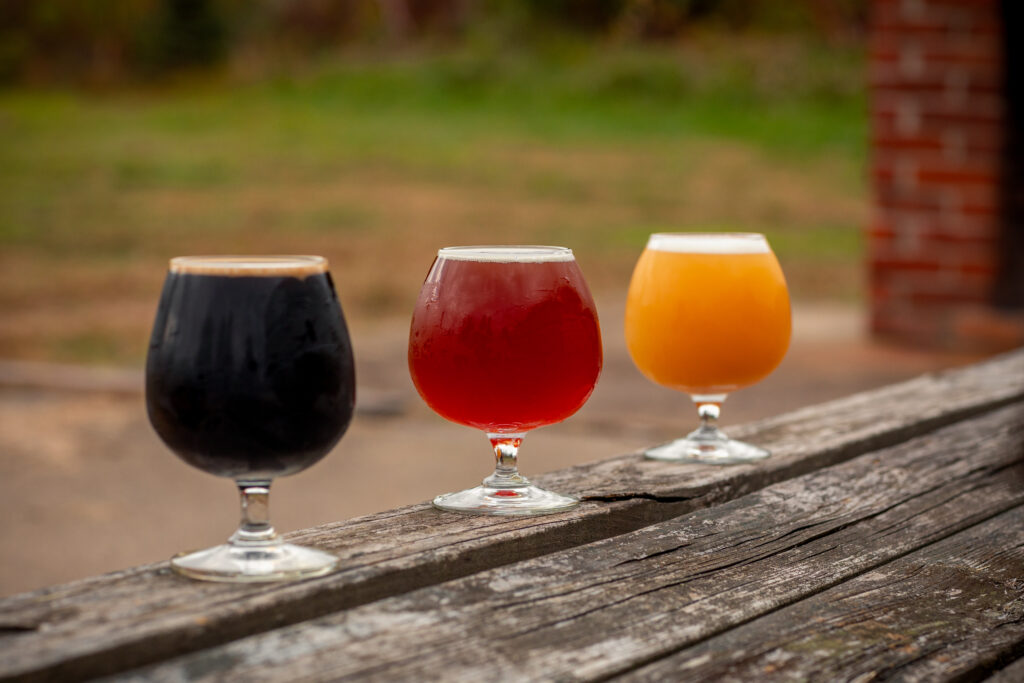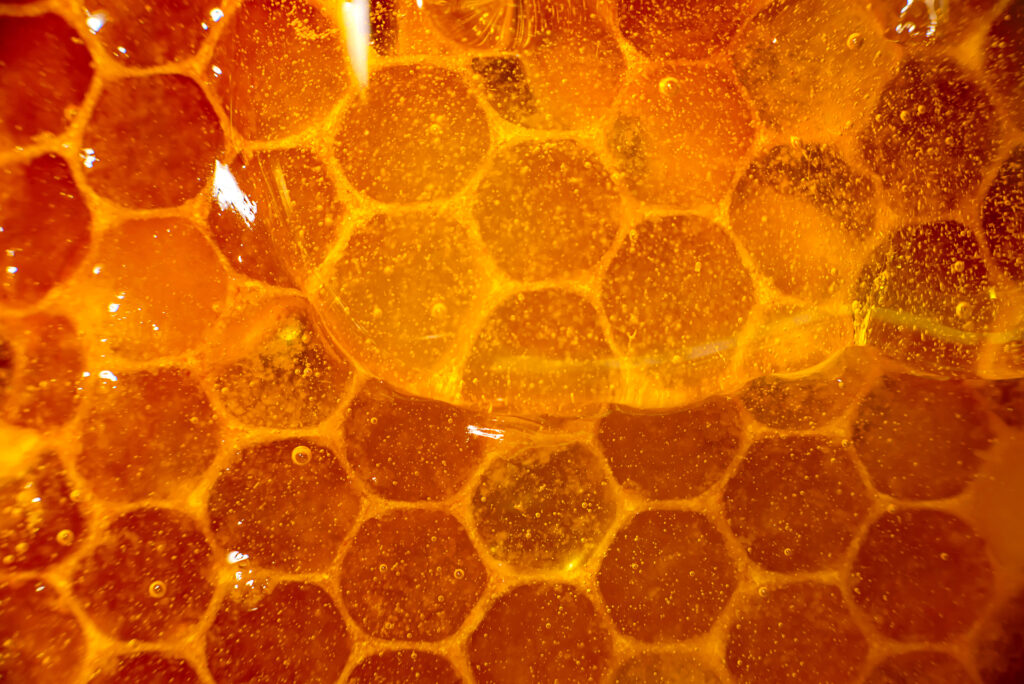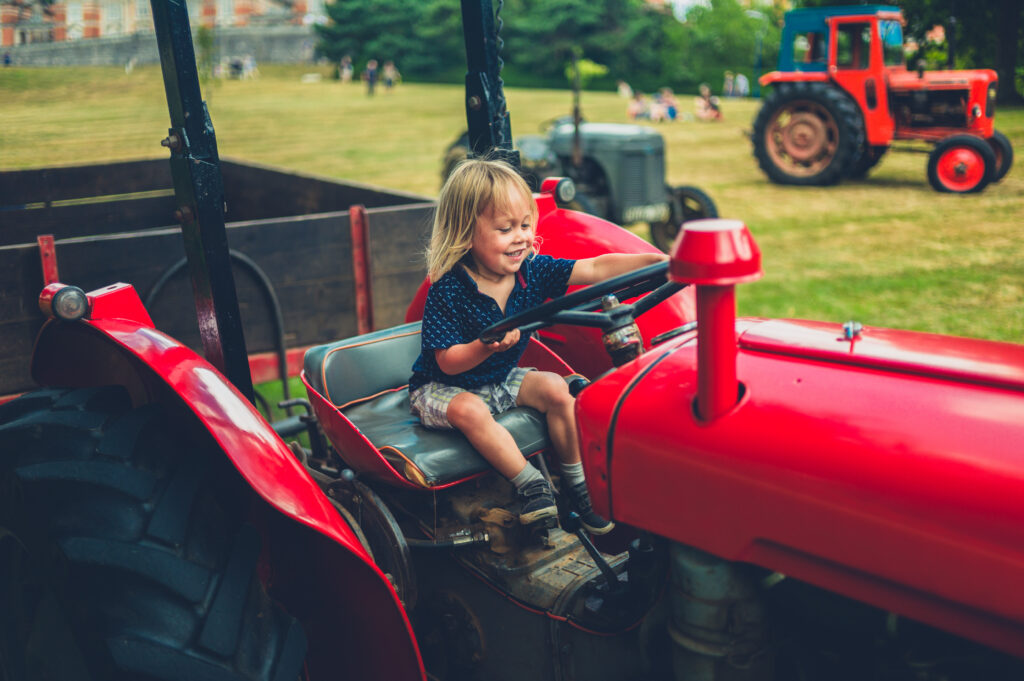October 4, 2022 @ 3:00 PM – 4:00 PM
Organic producers of all sizes and across all landscapes must follow the same national standards to meet the requirements of USDA organic certification. However, certified organic farmers and farmers using organic growing practices may have different production and market opportunities and challenges when growing in an urban environment. This webinar will explore research in this field, as well as perspectives from farmers on growing organically in urban spaces.
This webinar is presented in partnership with Oregon Tilth, as part of a series of webinars on organic topics.
Related Events

When you think CT Grown, you might not picture a frosty glass of local beer. Yet the boom in craft breweries has led to increased demand for local ingredients, which in turn has helped strengthen associated agricultural enterprises in Connecticut who grow the products brewers need.
After a short-lived renaissance in the mid-90s, craft beer and microbreweries have surged in popularity in the early 21st century. Breweries have been rapidly opening across the state, and Connecticut now boasts more than 125 independent breweries. Of course, a beer is only as good as the ingredients that go into it, and many Connecticut brewers have been turning to local sources for their barley, grains, malts, and hops.
As local brewers have increased in number, the demand for hops has also gone up. More than a dozen commercial hopyards have sprouted in Connecticut, and the Connecticut Agricultural Experiment Station has been supporting them with research and recommendations on integrated pest management and other best practices.
“Hop flavor is affected by soil and climate. Connecticut Grown hops have fruitier and more citrusy notes that allow us to develop more distinct flavors than mass-produced beers, especially when it comes to making New England IPAs that are less bitter than their West Coast counterparts,” says Alex DeFrancesco, owner of Stewards of the Land Brewery in Northford.
Some local farms and hopyards have taken the next step of opening a brewery of their own on the premises. Several farm breweries have been established since these venues were permitted under legislation passed in Connecticut in 2017.
Guests at a farm brewery have the added benefit of experiencing the joys of visiting a CT Grown agricultural producer. Instead of just tasting a flight or a pint, people can take home fresh produce, visit farm animals, or simply sit back and enjoy the pastoral surroundings while enjoying a brew made with CT Grown farm products.
“Our mission has always been to make our beers with locally grown ingredients,” says Barry Labendz, founder of Kent Falls Brewing Company in Kent. “We opened our brewery in 2015, around the same time Smokedown Farm Hops in Sharon and Thrall Family Malt (barley) in Windsor were getting started as well; before there was even a permit for farm breweries! Working with Thrall and Smokedown has taught us a tremendous amount about the physical ingredients we use to make our beer, a invaluable input with the growers about the flavors and aromas we are looking for in our ingredients, both of which play a huge part in producing delicious beers. And when a consumer purchases one of our beers, they are not only enjoying local flavors, but supporting a community of local farmers while doing so!
Several breweries and venues are celebrating the season by having Oktoberfest events. Find a full list here, and check in with your local brewer to find out how they have made CT Grown part of their work.
October 4, 2022 @ 5:00 PM – 6:00 PM
This webinar is designed for young adult beginning farmers and ranchers. Stigma exists across all age groups for those struggling with mental health. Uncontrollable factors, volatile markets, trade, and natural disasters; make struggling with emotions, relationships, career success, and safety more challenging when mental health and mental crisis enters the arena. According to the CDC, the agricultural industry is one of the top occupations with the highest rates of suicide. This training opens and introduces a discussion of mental health and wellness among young adult farmers and ranchers.
Free to Connecticut residents
Related Events

September marks the time of year when honey collection winds down and beehives are prepared for the winter. The month is observed as National Honey Month, and we’d like to take the opportunity to recognize the vital role beekeepers serve in sustaining Connecticut agriculture, while increasing biodiversity and food security.
Beekeeping has been part of Connecticut agriculture for hundreds of years, with historical records showing colonists keeping hives as far back as 1644. Most honey bees in the state today are tended by hobbyists who keep a few hives on their property. However, there are also some larger commercial operations that rent colonies for agricultural pollination, as well as more than two dozen apiaries.
Honey production in Connecticut is modest compared to many other states. According to the Connecticut Agricultural Experiment Station (CAES), there are approximately 930 registered beekeepers in Connecticut tending to 7,110 hives. There are also certain challenges in the state to keeping bees, including inconsistent weather and homeowners removing flowers considered to be weeds.
Nevertheless, Connecticut residents have shown strong enthusiasm for beekeeping. Since 1891, the Connecticut Beekeepers Association has been working to increase awareness of the importance of bees to the environment. Together with the Backyard Beekeepers Association and the Eastern Connecticut Beekeepers Association, it offers information and educational opportunities for those who are tending their own hives or wish to do so.
Beekeeping benefits
If you keep honey bees on your property, one of the main benefits is the ability to harvest honey. This is a delicious sugar substitute and has also been used for health treatments, such as soothing coughs or even topical application to treat burns. Apiaries also offer products such as beeswax, bee pollen, royal jelly, and skin care products.
Bees have an outsized impact on agricultural production as well, with honey bees estimated to be responsible for 80 percent of all insect pollination of flowering plants. This translates to an agricultural impact whose value is 10 to 20 times greater than the value of the honey and beeswax they produce. In Connecticut, bees are essential for the pollination of important CT Grown crops such as apples, pears, peaches, watermelons, cucumbers, squash, pumpkins, and berries.
Unfortunately, bee populations have been declining in recent years due to factors like pests, diseases, and environmental factors such as exposure to harmful pesticides. These challenges are putting more stress on Connecticut’s hives, which in turn is creating more concern for Connecticut farms about effective pollination.
Helping bees
One way Connecticut residents can support honey bees is to plant a pollinator garden. This process involves the removal of invasive plants as well as the sowing of native plants like highbush blueberry, New England aster, New Jersey tea, swamp milkweed, wild geranium, and wrinkleleaf goldenrod.
Avoid the use of pesticides and insecticides, which can be harmful to bees. Go easy on the herbicides as well. Dandelions, while usually considered a weed, are a particularly useful source of pollen and nectar; allowing them to grow in your yard is a great way to help bees.
Don’t be too aggressive with removing fallen leaves during the autumn. Bee queens often nest under leaf litter, so leaving some areas undisturbed will provide them with a habitat. You can also minimize habitat disturbances by conducting any soil management during the late summer or fall.

Brace yourself, parents. The whirlwind school day mornings are almost here.
School days are often accompanied by a mad scramble to make sure your kids have everything they need, and that they haven’t somehow tied their shoes together. It’s tempting to hasten the process of preparing a lunch by simply throwing a few packaged items together. However, this can often result in a meal that’s lacking in healthy nutrients and high in fat, sodium, and added sugar.
What’s a good balance for a school lunch? The USDA’s MyPlate program recommends that half of a lunch plate be dedicated to fruits and vegetables, one-quarter to grains, and one-quarter to protein, with a modest amount of dairy also allowed.

Some healthy lunch and snack options include:
- Turkey pita wraps: Pita pockets make this recipe a snap. Just stuff in an array of healthy ingredients, including turkey, grapes, greens, and apple for a delicious midday meal!
- Mini quiche: A terrific, compact lunch that can be prepared in a muffin tin. This simple recipe combines potatoes, greens, and cheese, and can be prepared in bulk to simplify a week of meals
- Yogurt parfait with fresh fruit: This beautiful layered mixture of yogurt, granola, and fruit makes for a perfect snack. Choose your favorite fruit options, such as peaches, blackberries, or blueberries
- Cinnamon apple chips: Ditch the salty chips and try this recipe instead. An hour of baking time yields a yummy snack for your young scholars!
Tips for preparing a healthy lunch
Feeling pinched for time? Coping with picky eaters? These tips might help:
- Get started the night before: Sliced fruits and vegetables are an easy lunch side, but trying to cut them up before the bus arrives can be a stressful process. Get started the night before so your child’s lunch is ready in the morning.
- Involve the kids: Invite your kids to participate in preparing their lunches, including washing fruits or vegetables and chopping them up if they’re old enough to use a knife. You can go farther by enlisting their help in picking out healthy foods at the grocery store, taking a pick-your-own adventure to a Connecticut farm, or finding food options at farmers’ market.
- Have fun with it: Miniature cookie cutters let you prepare fruits and vegetables in creative ways. Chopped fruits and vegetables also make useful artistic materials for creating faces, animals, and other surprises that will delight your child when they open their lunch box.
- Invest in organizers: Instead of a lunch box or brown paper bag, consider an organizer that helps you organize the meal. This bento box approach helps keep foods separate and minimizes the chances of a smushed meal, which is more likely to go uneaten
Nutrition in Connecticut schools
For many years, Connecticut’s schools have stressed the importance of proper nutrition. USDA school nutrition programs are administered through the Connecticut State Department of Education, and foodservice professionals in schools develop menus designed to meet or exceed USDA dietary guidelines.
Students can enjoy breakfast and lunch options, along with healthy snack options and programs that offer fresh fruit and vegetables. Parents can look up more information on these options on school websites, which often contain additional information such as the calorie count of each meal.
In addition, Connecticut’s Farm-to-School Program educates students on gardening in nutrition while highlighting the importance of fresh, locally grown produce. Earlier this year, 13 school districts and educational partners were selected to receive Connecticut Grown for Connecticut Kids grants to support infrastructure improvements, experiential learning, farm-to-school planning, and pilot programs to support the purchase of CT Grown products for schools.

Connecticut Agricultural Fairs — Where to Find the Fun
The transition from summer to autumn brings cooling temperatures, changing foliage, first days of school – and fairs!
Agricultural fairs — put on by dedicated agricultural societies, 4-H clubs, grange halls, and other organizations — are out in full force in Connecticut from mid-summer through October. These events have long been a Connecticut tradition; the Brooklyn Fair, first held in 1809 to promote “agriculture and local manufactures,” even boasts the honor of being the oldest agricultural fair in the United States!
While each fair has its unique charms, certain attractions can be found at almost every event. Stroll through the barns for an up-close look at horses, cows, sheep, and other animals. Enjoy delicious prepared food by various vendors and granges while perusing the exhibit halls and craft vendors. And, of course, you’ll always have the opportunity to climb aboard dizzying rides and win a giant stuffed animal at a game booth.
Fairs not only offer a chance for a fun day out, but also give you a chance to learn more about the state’s farms and agricultural producers. Visit our event calendar to find an upcoming fair near you!
